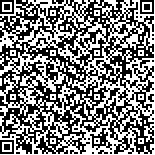下载中心
优秀审稿专家
优秀论文
相关链接
摘要

利用全极化SAR影像进行城市地区地物分类和目标识别时,极化方位角偏移、散射类型复杂多样以及弱后向散射地物难以区分等问题影响了图像分类和目标识别的准确性。针对这些问题,提出一种利用目标散射矢量模型TSVM(Target Scattering Vector Model)生成的旋转不变极化参数组合提取城市区域典型人工地物(建筑、道路、广场和桥梁等)的方法。首先,采用目标散射矢量模型分解和Relief特征选择算法提取出表征目标对称性的旋转不变极化参数、表征散射机理的散射角旋转不变极化参数;然后利用支持向量数据描述SVDD(Support Vector Data Description)分类器快速提取典型人工地物。利用南京市Radarsat-2全极化SAR数据进行实验,结果表明提出的方法抑制了地形起伏的山地或建筑分布不规则城区的极化方位角效应,有效解决了全极化SAR影像中人工地物提取的难题。同时,相比光学影像利用生物物理组合指数BCI(Biophysical Composition Index)和归一化建筑指数NDBI(Normalized Difference Built-up Index)提取城市人工地物的方法,对称性极化参数和散射角参数组合能有效区分出城市建筑用地和具有相似光谱特征的裸地,其检测精度提高10%以上。
Man-made target extraction from space-borne polarimetric synthetic aperture radar(SAR) imagery has been extensively investigated. However, challenging issues caused by polarization orientation angle(POA) shifts and various complex backscattering signatures still remain. Utilizing quad-polarimetric SAR(Quad-PolSAR) imagery for classification and target detection in urban areas has three major issues:(1) POA shifts;(2) Complex backscattering diversity;(3) Close similarity between targets of weak backscattering signals.This study proposes a novel approach to extract urban synthetic targets from Quad-PolSAR imagery with roll-invariant parameters to overcome the three aforementioned issues.
This study used the dataset of Quad-PolSAR imagery acquired by Radarsat-2 to extract the synthetic targets in the urban area. Landsat 8 imagery was used as a reference for comparison.The case study area is located in Nanjing City, Jiangsu Province, People's Republic of China.In the first step of the proposed method, the target scattering vector model, which supplied more parameters than the previously proposed models, was applied to generate the roll-invariant parameters. Subsequently, the relief algorithm suitable for binary classification was introduced to optimize polarization parameters. Considering feature selection and scattering mechanism analysis, two parameters, namely, scattering-type magnitude(parameter αs) and target helicity(parameter τm), are adopted. Finally, support vector data description was employed to identify synthetic targets because of its efficiency and robustness. In addition to αs and τm, morphological profiles were employed to improve the extracted result.
Result shows that the roll-invariant parameters αs1(the domain scattering-type magnitude) and τm2(the secondary scattering helicity of target) are effective for extracting the urban built-up area. Cropland, vegetation, and bare soil can be easily distinguished from the synthetic targets by integrating the parameters τm2 and αs1.The biophysical composition index(BCI) and normalized difference built-up index(NDBI)are derived from optical images. However, these indices confuse bare soil and synthetic targets. The proposed method can well recognize more synthetic targets, such as squares, streets, and other weak backscattering targets than typical decomposition like the Yamaguchi four-component decomposition. The parameters of H/A/alpha decomposition have the roll-invariance property. However, the entropy of urban areas and vegetation are highly similar.
Compared with the traditional method of POA compensation applied in the Yamaguchi four-component decomposition, the roll-invariant parameters are more effective in solving the problem of the POA shift.The introduced decomposition model supplies more parameters than H/A/alpha decomposition, which leads to higher accuracy in extraction. The selected parameters αs1(scattering angle characteristics) and τm2(symmetry polarization characteristics) of synthetic targets homogeneously distributed in space, which prevents the built-up area from being segmented into several classes and improves the efficiency of the extraction algorithm. Furthermore, the extracted result shows that the proposed method has significant advantages in distinguishing bare soil and urban targets compared with the results of optical indices, such as BCI and NDBI. The analysis of the scattering mechanism and experimental results reveal the effectiveness of the roll-invariant parameters.

